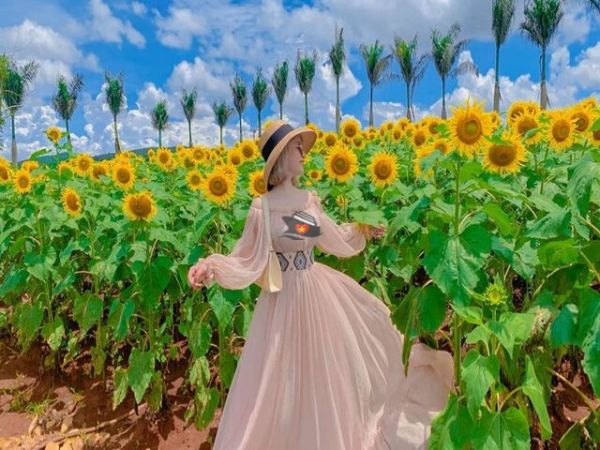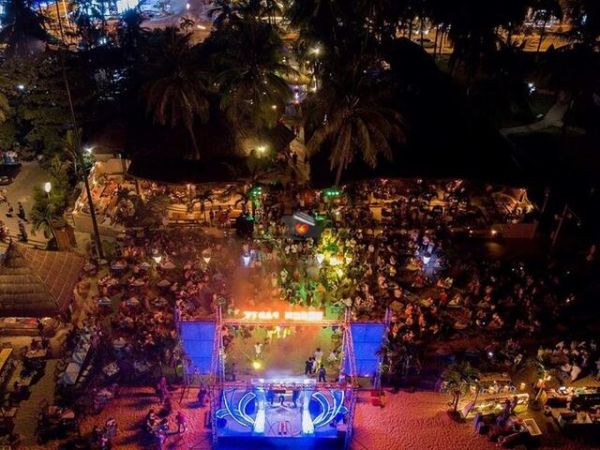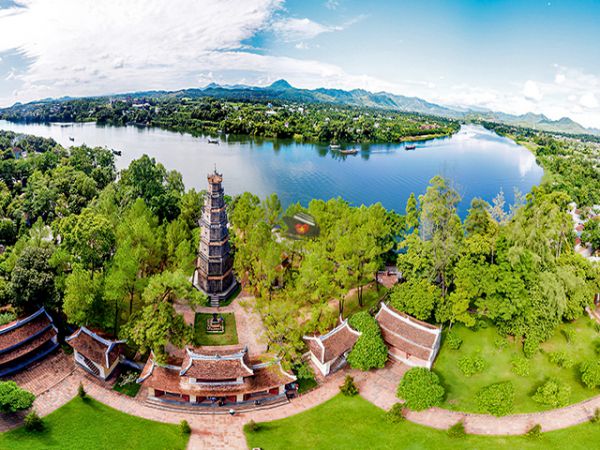QUAN THANH TEMPLE HANOI

Quan Thanh Temple Hanoi. A well-known historical and cultural relic of Hanoi. The Quan Thanh Temple is one of four respected temples that defend the four corners of Hanoi. Many historically significant items have been kept at this place.
Quan Thanh Temple Hanoi Information:
Address: 190 Quan Thanh Street, Ba Dinh District, Hanoi City
The opening hours: From 8:00 AM - 5:00 PM.
For adults: 10,000 VND for each ticket.
For students and children: 5,000 VND for each ticket.
Dress Code: modest clothing that covers shoulders and legs.
Quan Thanh Temple Hanoi is situated at the junction of Thanh Nien Street and West Lake. This ancient temple, together with Tran Quoc Pagoda, Van Nien Pagoda, Phu Tay Ho Temple, and many other adjacent temples, has made major contributions to the development of a harmonious architectural complex that exemplifies valuable cultural qualities.
Quan Thanh Temple Hanoi was constructed in 1010 during the Early Ly Dynasty and is devoted to Huyen Thien Tran Vu, a god who is a hybrid of the Vietnamese mythological character An Duong Vuong and Chinese legendary figure Chan Vo Tinh Quan.
The temple worships both Taoism and Buddhism. It was restored seven times between 1618 and 1941. This Hanoi temple was designated a national historical and cultural relic in 1962 for the first time.
>> View tour details: Hanoi cruise excursions - Journey to Discover the Thousand-Year Capital from Ha Long Port
The history of The Quan Thanh Temple Hanoi:
According to legend, the Quan Thanh Temple was founded during Emperor Ly Thai To's reign (1010-1028) and was dedicated to Tran Vu, the Taoist Deity of the North, whose emblems of might are the snake and turtle. It is one of the Four Sacred Temples, which were erected in four directions to guard the city against evil spirits. Quan Thanh defends from the north, while the other three temples protect from the east, south, and west: Bach Ma, Kim Lien, and Voi Phuc, respectively. In Hanoi, there is a second Tran Vu Temple in the Gia Lam District. Despite being smaller than Quan Thanh shrine, this smaller shrine is similarly dedicated to Tran Vu with a 9-tonne statue of the deity.
After several geographical modifications to the city plan, Quan Thanh Temple is now positioned at the corner of Quan Thanh Street and Thanh Nien Street, facing West Lake. It's just a short walk from Truc Bach Lake, where pilot (and future US senator) John McCain was shot down in October 1967.

The Architecture of Quan Thanh Temple Hanoi:
Throughout its lengthy history, Quan Thanh Temple has been restored multiple times, most recently in 1893 when the great gate and shrine were refurbished, therefore the building is a blend of imperial-era styles. The primary attractions of Quan Thanh Temple include a huge yard covered by a gigantic banyan tree and a shrine housing the famed bronze statue of Tran Vu.
During Emperor Le Huy Tong's reign in 1677, craftsmen from the surrounding town of Ngu Xa donated a massive black bronze statue of Tran Vu to Quan Thanh Temple, which still stands today. This monument is 3.96 meters (13.0 feet) tall and weighs around 3,600 kilograms (7,900 pounds)[5]. It shows Tran Vu as a deity with his two symbolic creatures, the snake and the turtle. It is considered a masterpiece of Vietnamese bronze casting and sculpting, as well as Vietnam's second-largest bronze statue. This piece demonstrates Vietnamese craftsmen's outstanding technical standards in bronze casting and sculpture throughout the 17th century.
A 1.15-meter (3.8-foot) bronze bell was cast concurrently with Tran Vu's monument. Trum Trọng, a great artisan, created his own statue in Quan Thanh Temple, beside Tran Vu's. In addition to the sculptures of Tran Vu and Trum Trong, the main shrine has a valuable collection of historic manuscripts from the 17th and 18th centuries, such as Poetry and Duilians. After each repair, a stele was frequently retained in the temple for historical purposes; the earliest dated from 1677, while the most recent was created by viceroy Hoang Cao Khai in 1894 under the reign of Thanh Thai Emperor during the French colonial era.
The temple now features inscriptions in Literary Chinese, which was adopted following Vietnam's independence from China. During the 17th century, Portuguese missionaries began writing Vietnamese using the Latin alphabet. In the early twentieth century, Vietnam formally adopted the Latin alphabet for its writing. Nowadays, just a few Vietnamese can read and understand old Chinese characters.
Buddhism had a big effect on the temple's design in the beginning. After several renovations, its architecture now incorporates many elements of the Nguyen Dynasty architectural style.
Coming through the gate, you will notice four pillars with four Vietnamese phoenixes. Each pillar is topped with a Vietnamese unicorn. Pairs of red couplets surround the four pillars, adding to the temple gate's magnificent appearance.
The feature of the main hall is the black bronze statue of Huyen Thien Tran Vu, which stands 3.96 meters tall and weighs 4 tons. With exquisite carvings, the statue is regarded as a piece of art that demonstrates the artists' outstanding bronze casting skills in the 17th century.
Quan Thanh Temple Hanoi - Animal Symbolism:
Most Vietnamese temples have a lot of animal iconography, and Quan Thanh is no exception. The picture of the snake and the turtle is the best-known example of animal symbolism. The serpent symbolizes prosperity, while the turtle denotes protection. In a classic Vietnamese fairy tale, the turtle wielded a strong sword that reached Le Thai To the Emperor and helped the Vietnamese defeat the Chinese.
Another notable animal is the crane, which appears in a popular Vietnamese myth alongside the turtle. The tale goes that there was once a drought and the turtle needed water to survive. The crane realized he was in distress and flew him to the nearest water source. Later, there was a flood and the crane had nowhere to land, so the turtle let the crane to stand on his back until the flood subsided. This story depicts symbiosis or companionship. This is seen by the two animals assisting each other when they are in distress.

Tips for Visiting Quan Thanh Temple Hanoi:
Quan Thanh Temple is not only an important historical and architectural monument, but it also acts as a focal point for several religious and cultural events in Hanoi. Visitors to this temple can engage in a variety of religious ceremonies.
Quan Thanh Temple accepts tourists year-round. On the first day of each lunar month, locals visit the shrine to give incense. This is also an appealing opportunity for high school pupils to learn about culture and history.
In particular, on every Lunar New Year's Eve, despite the chilly weather, villagers go to Quan Thanh Temple to worship and be blessed.
As a local sacred site, you should dress appropriately for your visit. For your own safety, cover your limbs and avoid wearing any transparent clothing. You're also encouraged not to be overly noisy or rush about within the shrine. "When in Rome, do as the Romans do" simply means imitating the locals and respecting the hallowed environment.
Quan Thanh Temple is an excellent place to spend some peaceful time admiring Eastern culture and history. It is strategically positioned and surrounded by a variety of other fascinating tourist opportunities. Come explore this age-old shrine in the heart of Hanoi for yourself.
How to get to Quan Thanh Temple Hanoi:
The shortest path to the temple is via Lang, Lang Ha, Hoang Cau, and Ton Duc Thang streets. The Quan Thanh Temple is approximately a few minutes walk from Ton Duc Thang Street.
Bus lines that pass by Quan Thanh Street include No. 50, 45, and 22A. Quan Thanh Temple is just a 5- to 10-minute walk from the Quan Thanh Street bus station.
Don't arrive too late: you should spend at least an hour exploring the Temple of Literature, so be cautious of time. Another thing to keep in mind is that Hanoi becomes quite hot throughout the summer, especially in the afternoon. Unless you are willing to brave the heat, arrive in the morning!
Photography is permitted, but please be respectful: do not laugh or speak loudly in the worship area.
Hanoi is a fascinating city with many unique Hanoi attractions and sights to explore. Anyone who is interested in Vietnam's lengthy and intriguing history, or who enjoys exploring the architectural and cultural characteristics of Hanoi, should not miss the Temple of Literature.
Quan Thanh Temple is a symbol of immense cultural, artistic, architectural, and sculptural characteristics. The stunning view of the temple and the sound of Tran Vu bells blend with nature, adding to the historic and lyrical charm of West Lake in Hanoi.
Despite the various ups and downs of history, the temple has maintained its distinctive structure. It has become a popular religious and cultural destination for Hanoians. Many people visit Quan Thanh Temple during the Tet festival, or on the first and fifteenth of each lunar month, to worship and pray for health, luck, and happiness for themselves and their families.

Hotline/ WhatsApp: +847-6666-0606
Email: info@friendlytravel.vn






.jpg)






